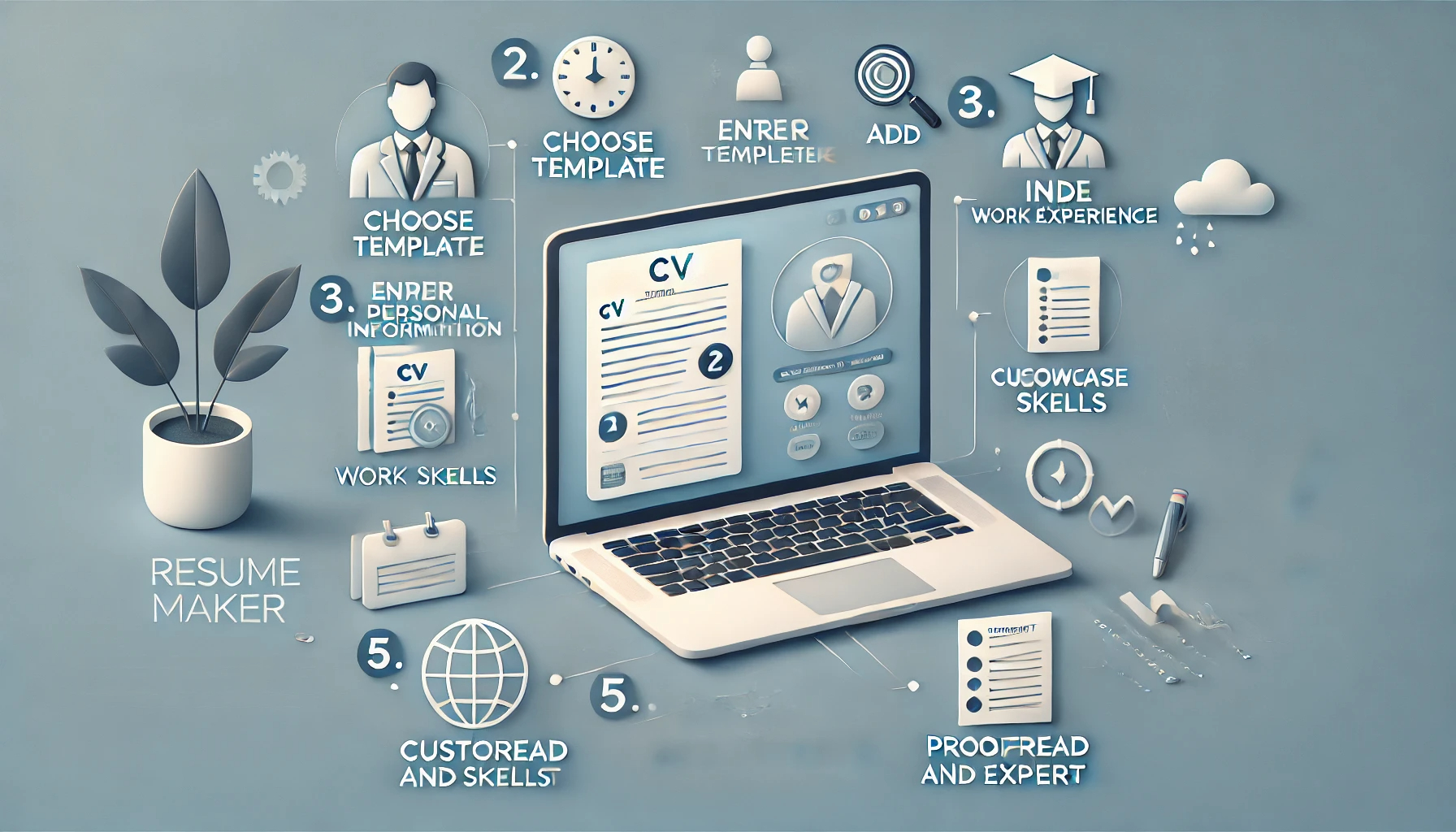Step by Step Guide on How a CV is Made with the help of Resume Maker
Introduction
A lot of people dread creating a CV because they either don't know how to write it or format it properly, and even if they do know these aspects most are left confused about how you should present your qualifications. The good news is that resume makers have solved this problem by providing you all set templates and instructions on what to fill in each step. A functional resume maker is an online tool which enables you to construct a sleek CV from scratch, meaning there is no need for you to take time out of your day creating one. Follow this guide through steps using a resume maker to build a CV template that employers will preside over
Step 1: Selecting the Appropriate Template
The way your CV appears on paper is what the very first thing a potential new employer will see so it is important to choose one that looks professional suitable for the type of position you are looking for. You even get an extensive selection in templates, most resume makers have modern, and traditional design based resumes. Select a template that represents your brand and the style of job you are seeking. For instance, a creative job might give you an edgier layout options, the corporate roles lavishing traditional, clean designs.
Tip: Be on the lookout for clear headings and appropriate spacing to make your CV easier to read.
Step 2 : Personal Info Fill in your details between the registration form.
Enter Your Personal and contact Information The next step is to enter your personal or contact info This part of your résumé will consist of your full name, phone number, email address and location (not obligatory). A number of resume makers will also allow you to insert links to your portfolios, LinkedIn profile, or personal site. Make sure all information is current and up to date, as that is how employers will email or call you regarding interviews.
Hint: DO NOT use a silly email address.
Step 3: Work Experience
Experience — the proper experience is the other big part of your CV. Begin listing your last job first (most recent) and then work down the line. For each role, be sure to list the job title, company name, dates you worked there and a few bullet points outlining your responsibilities and achievements. Remember to highlight relevant experiences for the position you are applying and, where possible, include measurables of your accomplishments - e.g., Increased sales by 20% over six months.
One Tip: Lots of action words – managed, developed, led.
Step 4: Include Your Education Background
Academic Qualifications: Reverse-chronologically list your essential academic qualifications in this section. List of School, Degree/Certifications Earned, Dates attended Include relevant coursework or academic projects for recent grads with less work experience Illust. of a new grad from college graduating with college courses you can write as an example this area is large when applying to Internship) Professionals can get away with just having their highest degree plus any relevant certifications.
Pro-Tip: Include certifications or short courses you have taken to show that you are serious about continued education.
Step 5: Display skills and qualifications
Certain employers are looking for particular skills that match perfectly with their position. Most resume makers offer a separate section for you to enter your professional skills. Hard skills should be central to the job and refer to practice using software, language or hand skills etc., but always remember soft skills such as communication, teamwork, problem solving.
Pro Tip: Change this section according to what you want immediately highlighting the relevant skillset which is mentioned in the job posting.
Step 6: Add in extra CV sections to tailor the CV
You want your CV serve to stand out … so think about adding in extra sections that really emphasise the traits you have that are going to mean on a day-to-day basis. These sections are optional in most writing assistance for resume tools like languages, volunteer work, certifications, awards and hobbies. These questions allow the interviewer to get a better view of who you are as an individual and what you may potentially offer aside from work experience.
Note: Keep only sections that are relevant to the job or add value to your CV. In so doing, for example, his ability to speak in more than one language may be just as valuable for roles that require communication in several languages.
Step 7: Proofread and Export
Once your CV is complete, first and foremost, make sure you proofread it thoroughly for any spelling, grammar or formatting mistakes. It can help to make a more powerful impact on the employers if your CV is well polished. After you are sure that your CV is accurate, you can export in different formats such as PDF or Word. With almost one-click most resume makers allow you to directly download or print your CV.
Top Tip: Get a friend or colleague to read over your CV for any spelling. Writing your essaymarkup mistakes that you might have missed.
Conclusion
A resume maker is a sure-shot way to create professional CV in a hassle-free manner. This is not to mean that if you use the right template, get the content correct and a few additional customizations that show your experience well — you can create a resume. Start building your CV today with the help of MyCVCreator resume maker tool. com and kick start your career now!
If you are specifically looking to Create a CV, we can also help with that as well. Check out our Powerful Resume Maker — Lands You Jobs and Lets Download it on PDF TRY NOW for FREE!









